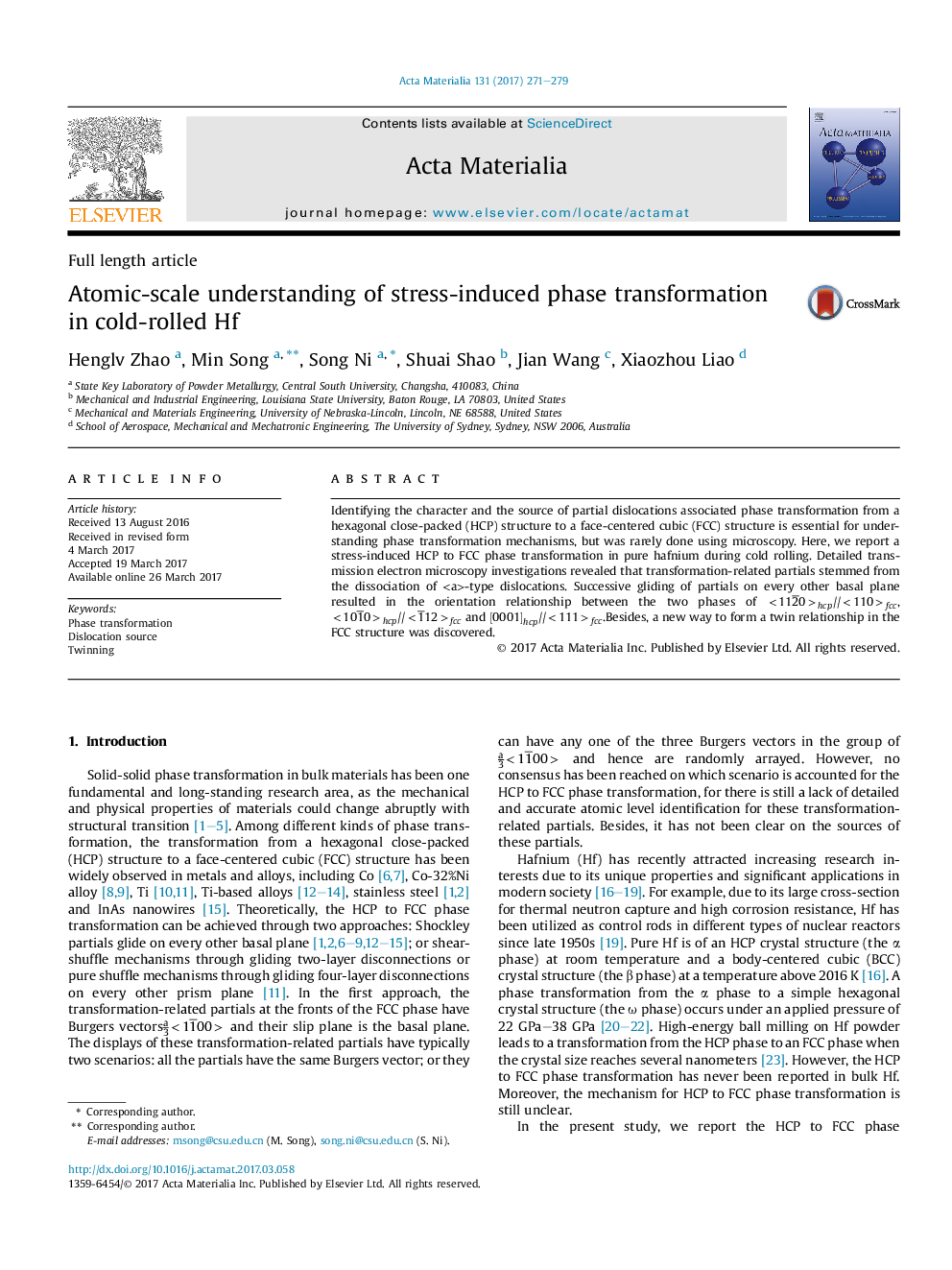| Article ID | Journal | Published Year | Pages | File Type |
|---|---|---|---|---|
| 5435855 | Acta Materialia | 2017 | 9 Pages |
Identifying the character and the source of partial dislocations associated phase transformation from a hexagonal close-packed (HCP) structure to a face-centered cubic (FCC) structure is essential for understanding phase transformation mechanisms, but was rarely done using microscopy. Here, we report a stress-induced HCP to FCC phase transformation in pure hafnium during cold rolling. Detailed transmission electron microscopy investigations revealed that transformation-related partials stemmed from the dissociation of -type dislocations. Successive gliding of partials on every other basal plane resulted in the orientation relationship between the two phases of <112¯0>hcp//<110>fcc, <101¯0>hcp//<1¯12>fcc and [0001]hcp//<111>fcc.Besides, a new way to form a twin relationship in the FCC structure was discovered.
Graphical abstractDownload high-res image (475KB)Download full-size image
